Ringstrasse
Ringstraße
Ways to Experience this attraction
Ringstrasse, Vienna Overview
One of the most prestigious and magnificent Boulevards ever constructed is the Ringstrasse in Vienna City. The Ringstrasse works as an open cultural hub housing various monuments and scenic parks, remarkable museums, and open plazas. It is located in Innere Stadt.
The Ring Boulevard works as a condensed version of Austria’s history and culture and is a definite must-visit for all. After its planning and establishment in the 19th century, the Boulevard opened to the public offering a variety of activities including exploring the museums, participating in local events, checking out the local cafes, and even merely admiring the cityscape. Vienna city’s Ringstrasse is a great visit during any time of the year. Storing events for both summer and wintertime visitors, a day here is truly an experience of a lifetime. This majestic gem located at the heart of the city ranges across 6.5 km. The Ringstrasse claims to have the highest number of historical sites in one place and is the one-stop-shop for all you can see. Visitors will come across several popular monuments including the Rathaus, the Parliament, Stadtpark, Museum of Fine Arts, Danube Canal, and much more. Perfect for an on-foot exploration or through the local transport, the Boulevard stores a number of sights to behold. Apart from its exploration during the day time, the Ringstrasse is especially beautiful after sundown once all the monuments lit up.
Read More on Ringstrasse
Architecture of Ringstrasse
The iconic Ring Boulevard of Vienna city, known as the hub for the country’s history and culture was designed in a style unlike any other. Being a Boulevard styled plaza, the Ringstrasse was built in a historicist style. As buildings dotted the Boulevard vicinity one by one, the Ringstrasse took its shape and design.
Most of the monuments, cafes, and highlights situated on Ringstrasse follow from the 18th and 19th century; each designed for a purpose or a symbol. The Ring Boulevard, encompassing a mosaic of cathedrals, operas, Parliament buildings, plazas, and more adapted and improved according to budding generations. Quite similar to the purpose of the Acropolis in Ancient Greece, the Ring Boulevard received a special mention globally for housing the maximum amount of historically significant buildings under one vicinity.
Visitors find it interesting to note that the historicist style behind Ringstrasse was part of an art movement called Gesamtkunstwerk, meaning a collaboration of different artistic elements. Forming a synthesis of different monuments of different purposes, the Ringstrasse itself is considered an architectural masterpiece today.
Highlights and Things to Do at Ringstrasse
Ringstrasse or Ring Boulevard branching out across the city is located in the heart of Vienna. Topping the vicinity with the highest number of historical sites, Ringstrasse is the cultural and historical hub of Vienna. Everything from top monuments, historical buildings, museums, state parks, cafes, and more are situated in Vienna’s Ring. Forming the outline of all other attractions in Vienna, the Ringstrasse offers a spectrum of activities for all seasons.
The Ringstrasse is divided into several sections, each with its own culture and experience to offer.
1. Parkring
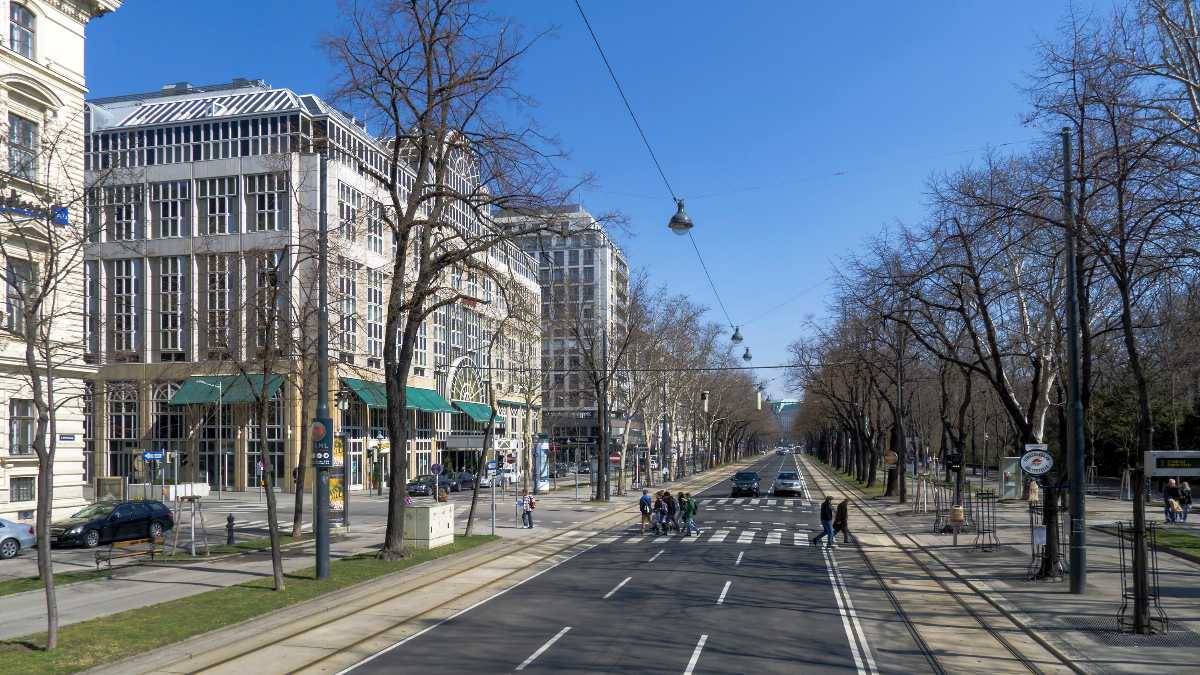
Parkring is a wing of the Ringstrasse housing famous parks and hotels. One of its most popular sights is the Stadtpark, along with the historic restaurant and dairy. Stadtpark is renowned for its gold plated Straus statue, along with arenas to experience live music and theatre. A perfect destination for a stroll in the park while sipping warm coffee, Stadtpark is a city favourite. It also features a children’s playground.
Apart from the public park, visitors can also play a stay at the luxurious Marriott Hotel situated in Parkring of Ringstrasse. A stay at the best hotel in the country is nothing less than royalty.
2. Stubenring
This part of Ringstrasse is home to several important monuments of historical and administrative importance. Visitors can tour around everything from the Imperial Ministry of War to the Applied Arts Museum, and even cosy cafes dating back decades.
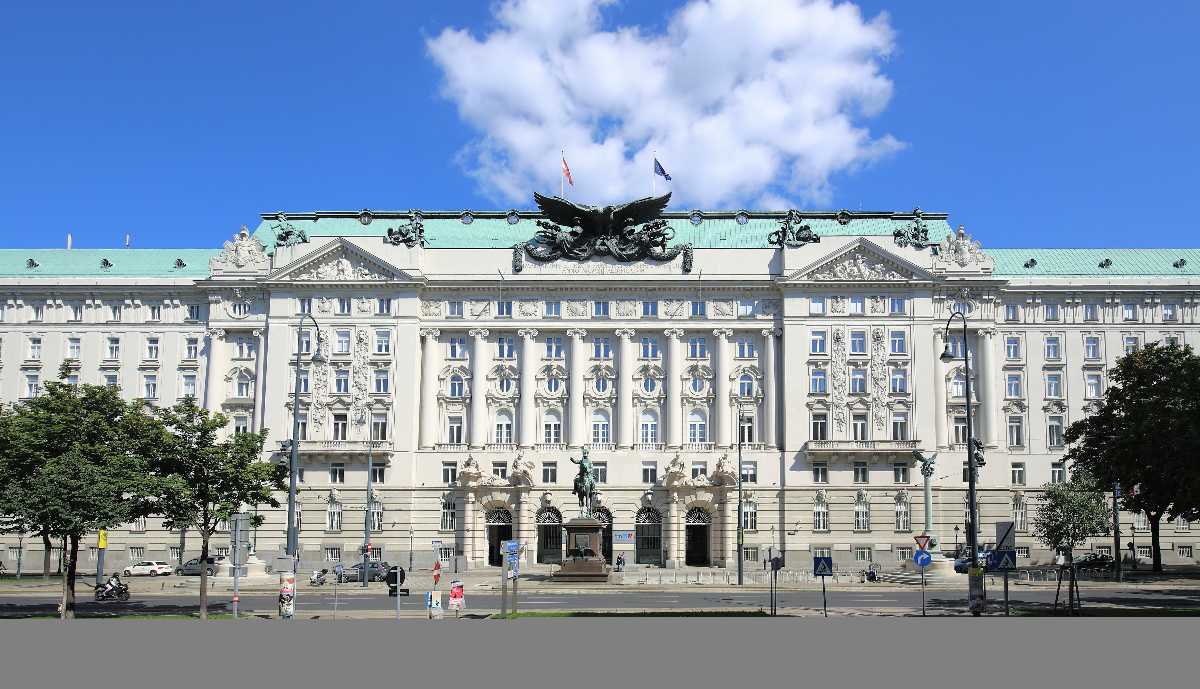
The history buffs cruising through the Stubenring make it a point to visit the Former Imperial Ministry of War. Though inspired by Baroque style architecture, it is still one of the most recently constructed and modern buildings of the city. With a history dating back to World War 2, the Ministry of War features a tour on the earlier political and cultural history of the city.
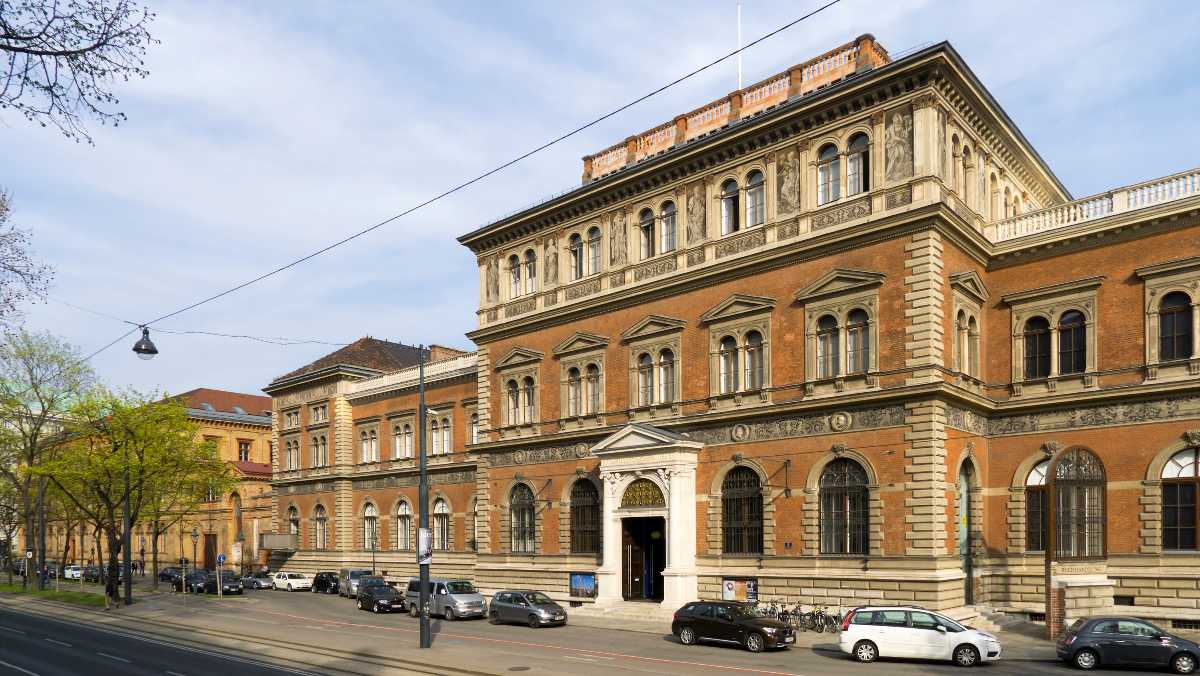
Stubenring boasts of one of the most popular museums of the world, namely the Museum of Applied Arts or Contemporary Art. This museum, situated neck to neck with the University of Applied Arts is a wonder itself. Visitors interested in art, architecture, fine arts, and more will enjoy a guided tour through its remarkable installations and paintings. The museum features one of the best collections worldwide and even has a special corner for furniture design.
3. University Ring
The University Ring of Ringstrasse is one of the most popular and crowded sections of the Boulevard. Featuring everything from the majestic Vienna City Hall, to the Rathausplatz, a theatre, local events, and much more; there’s always something here for everyone.
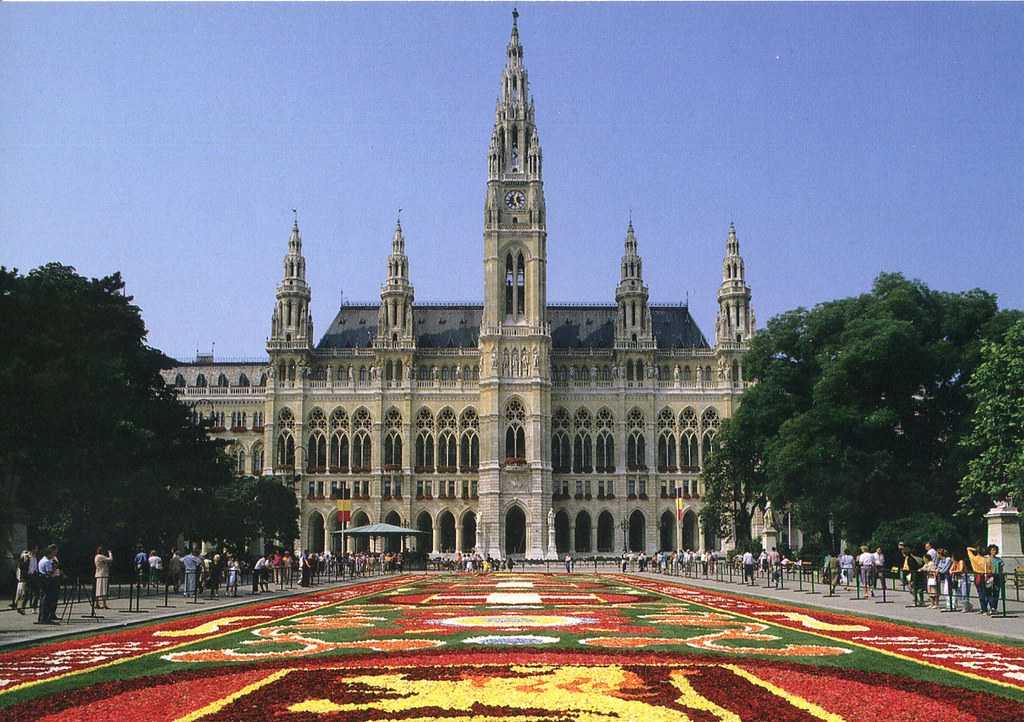
Hands down, the most sought after destination on University Ring is the Vienna City Hall. An architectural masterpiece in itself, visitors can spend hours just admiring its intricate design especially with a sunset backdrop. The monument comes to life especially at night with the glow in the dark palm trees dotting the vicinity. A popular event at the city hall is the Life Ball and truly is an experience of a lifetime.
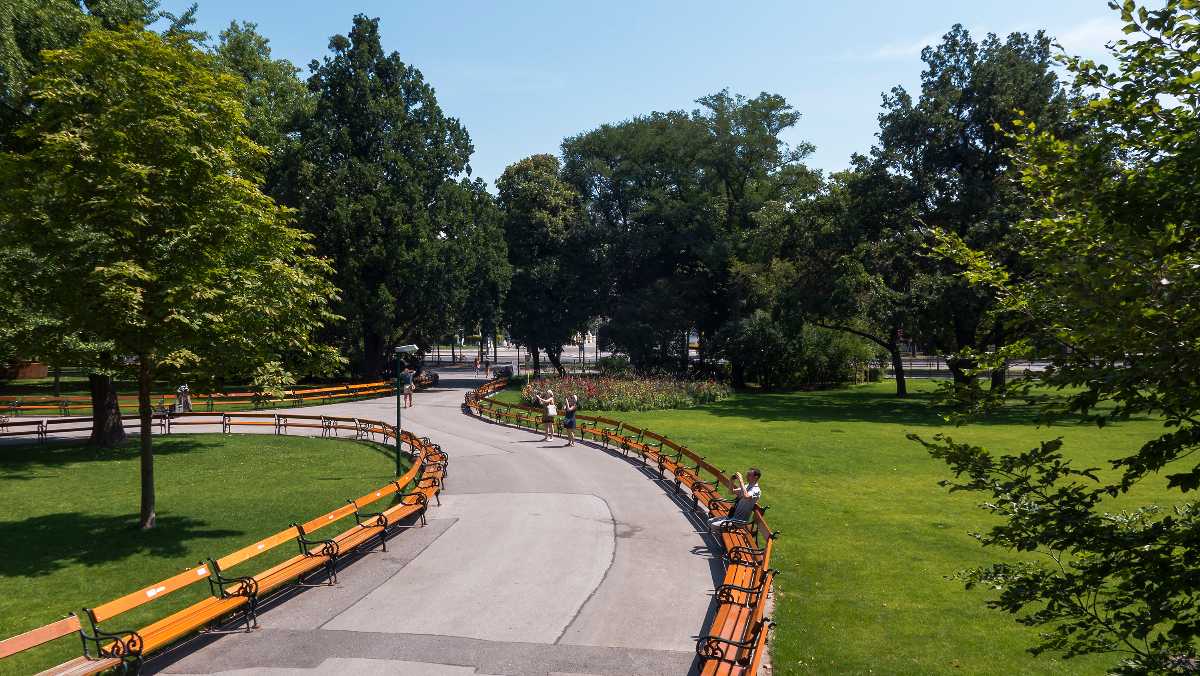
Opposite to the Vienna City Hall or Rathaus, is the Rathausplatz and Rathauspark. Both the Park and the Plaza are an excellent visit to soak in the culture of Vienna. Rathausplatz features seasonal events, music performances, open air cinemas, and even converts into an ice skating rink during winters. Rathauspark is a relaxing patch of greenery of the city where visitors can enjoy a walk in the park or even the local food stalls.
The University Ring of Ringstrasse also features the Burgtheater, an establishment inspired by Baroque style architecture. Apart from globally acclaimed performances, the theatre boasts of a romantic restaurant Vestibul.
While you’re there, another main highlight is the University of Vienna. This building composed of neo renaissance architectural elements in the oldest in all of the German countries. It is counted as one of the largest universities in Central Europe as well.
4. Schottenring
Historically popular for the Vienna Stock Exchange, the Schottenring side of Ringstrasse is home to a scenic palace turned hotel. Visitors make it a point to visit the Palais Hansen, constructed by the architect Theopil Hansen. It is particularly famous for housing Vienna’s most luxurious hotel, the Kempinski Hotel.
5. Dr. Karl Renner Ring
The Ring Boulevard’s Dr. Karl Renner Ring is considered as the most beautiful segment of Ringstrasse. Right off the bat, visitors will notice the majestic Austrian Parliament which its Greek influenced architecture. A replica of the Acropolis entrance, the Austrian Parliament offers a variety of activities, including guided tours of nearby museums, entry to the art installations, and even the chance to attend live Parliamentary sessions.
Volksgarten, considered the twin of Burggarten is also located in close proximity. A beautiful park popular for its roses, the Volksgarten is particularly sought after for its Pavillon. The Pavillion functions as a cafe, restaurant, recreation centre, and dance hall and is a great place to dive into Vienna’s culture. The garden brings out its old style furniture during the months of summer, making it scenic for a photoshoot.
6. Burgring
The Burgring wing of Ringstrasse contains all the plazas for which Vienna city is popular for. A city centre arena converted into a cultural hub, visitors spend hours cruising through the highlights of Burgring. First and foremost, tourists will come across the Heldenplatz, a public square which was earlier used for political events. What’s more? Visitors find it interesting to note that Adolf Hitler’s famous speech was also spoken from this very plaza.
Burgring also boasts of the Maria Theresien Platz renowned for displaying a huge statue of the Empress. Neatly tucked between the Museum of Natural History and Museum of Fine Arts, the statue makes for a brilliant shot. While there, visitors can also view the globally acclaimed Museum of Natural History and the Museum of Fine Arts. With a guided tour to explore the ancient relics and magnificent artworks, it is a true delight for all the art enthusiasts.
7. Schubertring and Kartner Ring
Ringstrasse also features Schubertring filled with palaces and historic cafes. This segment displays the statue of Count Schwarzenberg located at an incredible height. Visitors can also explore the Hers Monument.
Apart from the monuments and sculptures, visitors can make their way to the Kartner Ring, a mini town housing the most popular hotels of the country.
History of Ringstrasse
It was only after a proper invasion that the state authorities realized the need for urban planning and opening the areas to the public, as part of a proper democratic system. In 1847, Emperor Franz sanctioned permission to build the Ring Boulevard. The entire purpose of this immediate change was to bring Vienna on par with other culturally rich and modernized cities of Europe. As the economic conditions of the country improved, businesses and the government alike spent more and more on building public spaces. Today the Ring Boulevard is home to some of the most historically important and globally acclaimed monuments and sights.
Cafes and Pubs Near Ringstrasse
Cafe Ministerium often tops the list for the best cafes in the country. This coffeehouse can be the hub of politics but also a warm and cozy place to sip on some authentic Austrian beverages while looking out onto the busy Boulevard. Visitors can keep an eye out for the months Vienna Coffeehouse Conversations where experts, travellers, and common people all align and share their experiences.
The iconic Ring Boulevard of Vienna city, known as the hub for the country’s history and culture was designed in a style unlike any other. Being a Boulevard styled plaza, the Ringstrasse was built in a historicist style. As buildings dotted the Boulevard vicinity one by one, the Ringstrasse took its shape and design.
Most of the monuments, cafes, and highlights situated on Ringstrasse follow from the 18th and 19th century; each designed for a purpose or a symbol. The Ring Boulevard, encompassing a mosaic of cathedrals, operas, Parliament buildings, plazas, and more adapted and improved according to budding generations. Quite similar to the purpose of the Acropolis in Ancient Greece, the Ring Boulevard received a special mention globally for housing the maximum amount of historically significant buildings under one vicinity.
Visitors find it interesting to note that the historicist style behind Ringstrasse was part of an art movement called Gesamtkunstwerk, meaning a collaboration of different artistic elements. Forming a synthesis of different monuments of different purposes, the Ringstrasse itself is considered an architectural masterpiece today.
Cafe Pruckel is an interesting twist on rest of Vienna’s cultural style. While the streets and restaurants are drenched with 19th century influences, Cafe Pruckel is a hippy 1950s style cafe with colourful interiors. Apart from tantalizing desserts, tourists can also enjoy the live piano performance.
Cafe Landtmann is another historic cafes dotting the streets of the Ring. If you’re a psychology fanatic, be sure to click a picture here as this was the favourite hangout spot of Sigmund Freud. Its popular dishes include the locally styled coffee and apple strudels.
Apart from these, visitors can also explore the Demel Cafe and other local food joints.
How to Reach Ringstrasse
Hop on Hop off: One of the most convenient ways of reaching the Ringstrasse is through the Hop on Hop off bus roaming around at several intervals.
The Ringstrasse can be best explored on foot or while joining the guided biking tour.
Top Hotel Collections
Top Hotels Near Ringstrasse
Ringstrasse Reviews

Have a Question on Ringstrasse?

experience.